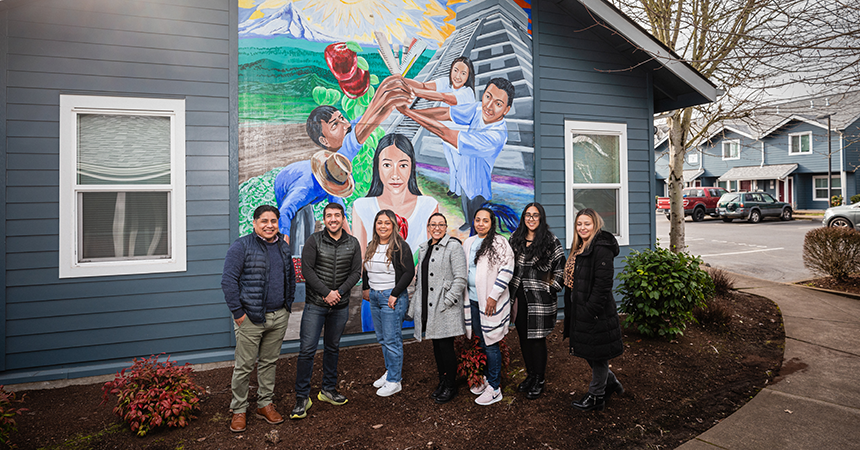For families living in one of Farmworker Housing Development Corporation’s (FHDC) 11 properties in Oregon’s mid-Willamette Valley, a home is more than just a place to live, it’s a path to a brighter future. The organization’s mission is to provide affordable housing while helping residents build long-term wealth. FHDC supports over 480 families offering housing, financial education, leadership programs, after-school activities and basic needs assistance to 2,500 people in Woodburn, Salem and Stayton.
“Our work goes beyond giving a family the keys,” says Christian Meneses-Zurita, senior asset manager at FHDC. “That key is meaningful. It represents residents’ dreams and aspirations. Our focus is on creating long-term impact and building generational wealth.”
Helping residents save money and energy
FHDC’s partnership with Energy Trust of Oregon through the Strategic Energy Management (SEM) offering reflects their commitment to saving energy. Through their participation, the team has gained a deeper understanding of their energy use, identified sources of waste and implemented strategies to track and reduce energy consumption, helping lower operating costs for the non-profit organization across its properties. Since joining SEM, FHDC has received $22,800 in incentives for completing energy-saving actions, further supporting their efforts to invest in energy-efficient improvements and reduce long-term expenses.
This collaboration also helps residents save energy and reduce utility costs through interactive workshops. Starting in 2023, FHDC has worked with Energy Trust to hold regular workshops at three of their properties where residents learn practical tips, like adjusting thermostats, unplugging chargers and sealing air leaks.
“During workshops, residents were shocked to learn how much energy phone chargers left plugged in could use,” says Meneses-Zurita. “For families with multiple children and devices, small adjustments can quickly add up.”
These small changes have made a huge difference, with many residents seeing their energy bills drop significantly and some cutting monthly costs in half. “Some of the residents shared stories where in the summers their bills were $300, then dropped to $150 or even lower.* That’s how we know the workshops are working,” Meneses-Zurita adds.
Staff members also learn how to save
Residents aren’t the only ones learning how to save energy. FHDC’s facilities staff are also engaged in Energy Trust’s SEM offering, working closely with an energy coach. Together, they identify energy inefficiencies through “treasure hunts” and brainstorm practical solutions to address them. This initiative has resulted in policies that prioritize energy efficiency in all future upgrades, while new residents are encouraged to embrace energy-saving habits as part of their move-in process.
Meneses-Zurita and his team now also have a way to gauge their success with a portal that provides energy use data per property and per building. “We’re now able to see usage go up or down or whether we’ve made progress. In the past I never had a tool like that.”
Reducing energy use with equipment upgrades
FHDC’s partnership with Energy Trust extends beyond their successful SEM participation, leading to significant energy-saving upgrades across multiple properties. They’ve installed new refrigerators, bath fans, windows, attic insulation, and most recently, ductless heat pumps (DHPs) at the Colonia Amistad and Nuevo Amanecer multifamily properties.
They installed 128 DHPs at no cost through Energy Trust’s Community Partner Funding. The new, more energy-efficient DHPs alone are expected to save residents a combined $33,000 annually on utility bills, helping families manage their costs while staying comfortable year-round.
“With support from Energy Trust, we were able to make these upgrades without overburdening our budget.”
Looking ahead, FHDC plans to expand SEM workshops to all their properties and continue seeking opportunities to reduce energy use, giving more families the tools to save energy and money.
“Energy savings are a win-win. When we lower our costs, we can reinvest in our properties and, most importantly, improve our residents’ lives.”
– Christian Meneses-Zurita, senior asset manager at FHDC
To learn more about Strategic Energy Management for multifamily properties visit www.energytrust.org/multifamilysem. For information about cash incentives for energy-saving equipment upgrades, visit the multifamily cash incentives page or get started by contacting us at multifamily@energytrust.org. Together, we can help more families save energy and build a brighter future.
*Results may vary and can be dependent on several factors.

